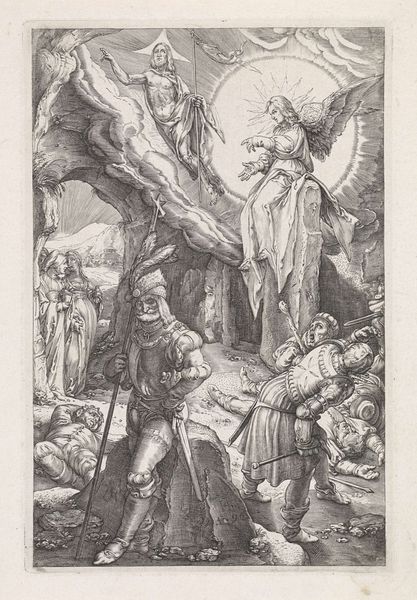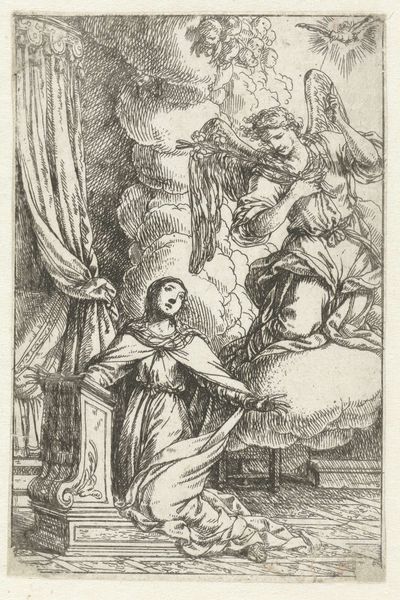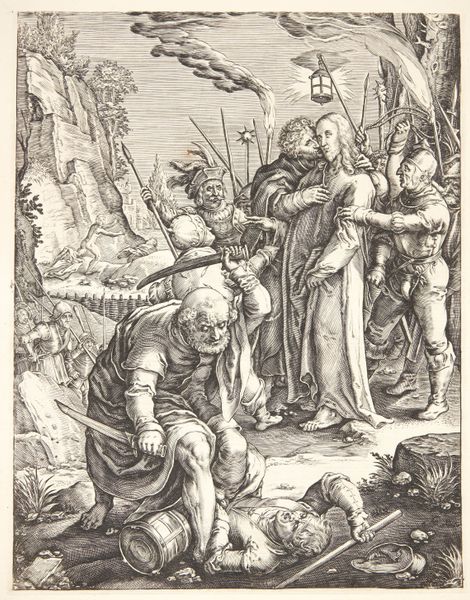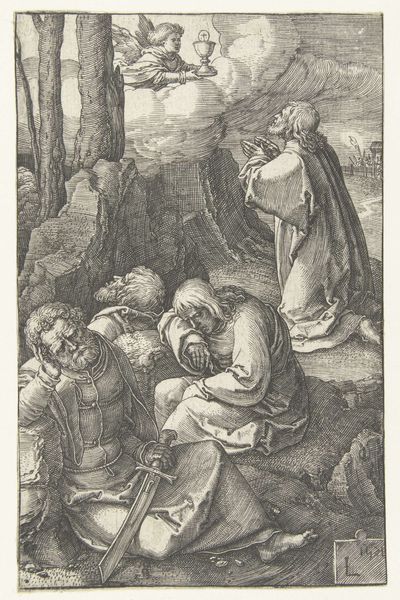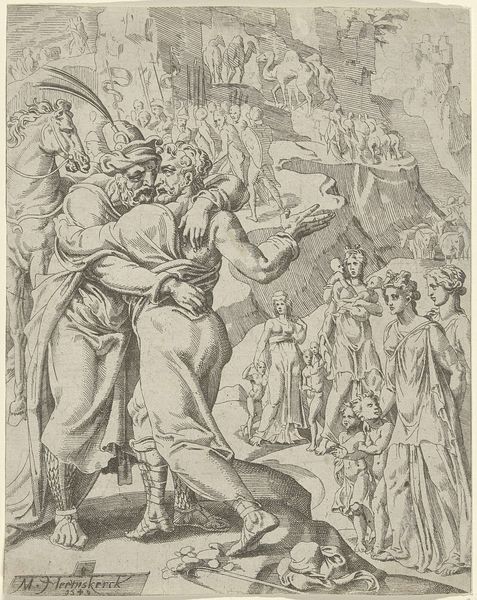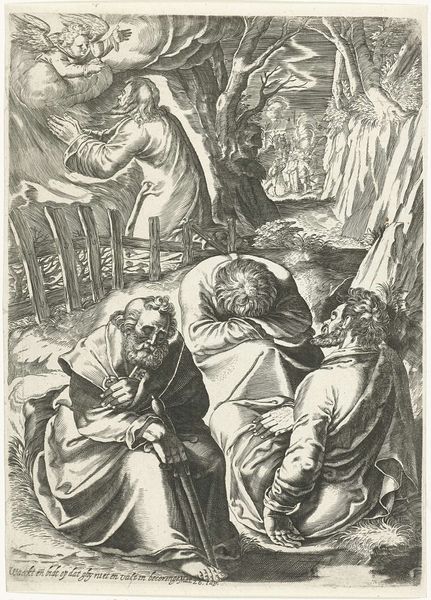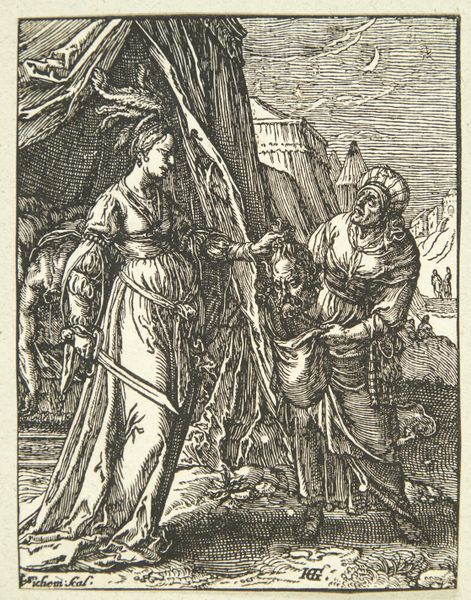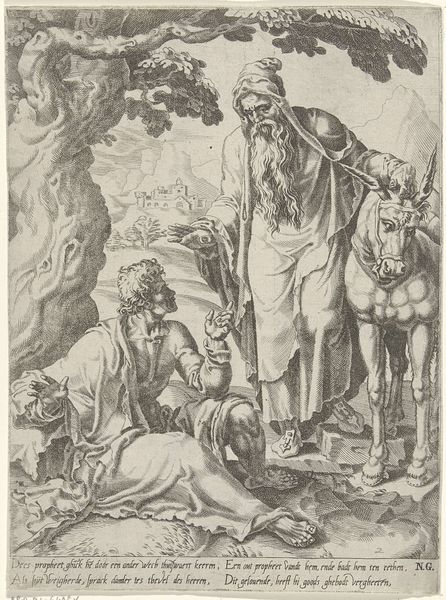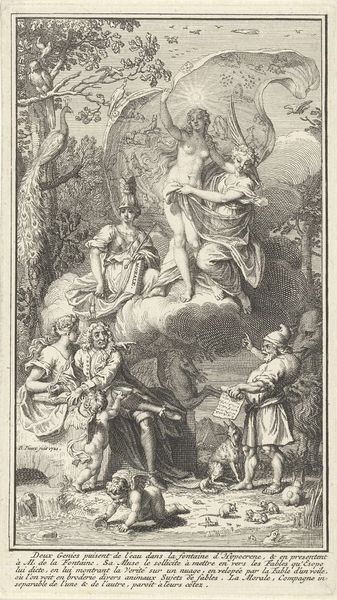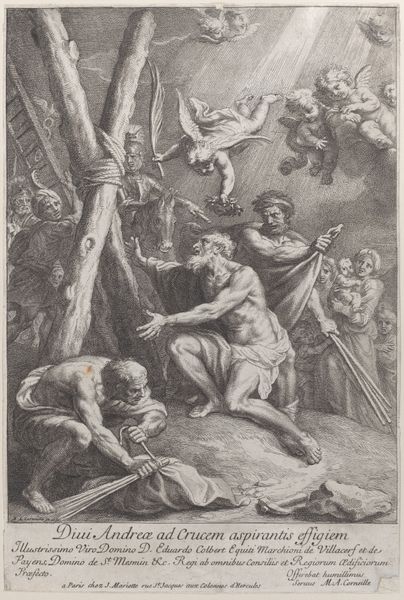
print, engraving
# print
#
figuration
#
history-painting
#
northern-renaissance
#
engraving
Dimensions: 200 mm (height) x 131 mm (width) (bladmaal)
Curator: Let's take a closer look at Hendrick Goltzius's engraving, "The Resurrection," created in 1596. It's currently housed at the SMK, the Statens Museum for Kunst. Editor: My initial reaction is that the craftsmanship is remarkable. The detail achieved solely through engraved lines is impressive. It looks stark, like something made from etched steel, but dramatic. Curator: Yes, Goltzius was a master printmaker, renowned for his technique. This work exemplifies Northern Renaissance ideals, doesn't it? The careful depiction of anatomy, the detailed costumes, and the emphasis on narrative... Editor: And the fallen soldiers—each rendered distinctly, with such attention paid to their armour and musculature. The labor, time, and sheer skill that went into making the metal printing plate would be considerable. You know, it makes you think about printmaking as a commercial enterprise—a method for circulating and consuming images and ideology in sixteenth-century Europe. Curator: Precisely. Prints allowed religious narratives like this to reach a much wider audience, solidifying certain visual interpretations of the resurrection within the culture. The placement of Christ above the angel, even... a subtle reinforcement of theological hierarchy for the masses. Editor: Yet, consider the material constraints! The stark black and white, dictated by the engraving process itself. Did this aesthetic in any way limit or amplify the emotional or spiritual impact of the artwork? Or maybe enable a sharper focus on doctrine? Curator: I think it offered clarity, actually. The linear precision lends it an air of authority. While paintings of the time could be opulent, these prints circulated widely, shaping popular understanding of faith and power in complex ways. Editor: It’s fascinating to consider the artwork within the history of manufacturing and dissemination of images. Something we easily overlook today. Curator: Indeed. Seeing it in this context transforms how we approach Goltzius's vision. The engraving’s availability would reinforce religious stories and beliefs. Editor: A convergence of skill, belief, material, and social forces...it's a story far bigger than what immediately strikes the eye.
Comments
No comments
Be the first to comment and join the conversation on the ultimate creative platform.
